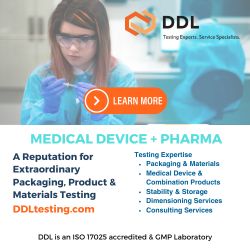Ocular Therapeutix Receives FDA Agreement Under Special Protocol Assessment for Registrational Trial of AXPAXLI in NPDR
Ocular Therapeutix, Inc. recently announced it has received written agreement regarding a registrational trial design from the US FDA under a Special Protocol Assessment (SPA) for the company’s planned clinical trial of AXPAXLI (also known as OTX-TKI) for the treatment of non-proliferative diabetic retinopathy (NPDR).
“Securing a Special Protocol Assessment agreement from the FDA for our planned NPDR trial represents a major milestone as we look to broaden the impact of AXPAXLI beyond wet AMD and into diabetic eye disease. This formal agreement ensures direct FDA alignment with our proposed approach for NPDR and provides us with a clear regulatory path forward. We are confident AXPAXLI will be successful in the trial design and primary endpoint agreed upon with the FDA,” said Pravin U. Dugel, MD, Executive Chairman, President and Chief Executive Officer of Ocular Therapeutix. “The opportunity in diabetic eye disease is tremendous, with diabetic retinopathy affecting nearly 9 million people in the US alone. We believe AXPAXLI, with its potential for annual dosing, could offer a transformative approach to improving outcomes while preventing or substantially reducing the rate of vision-threatening complications in these patients. We look forward to providing more details about our strategy in NPDR and DME at our upcoming Investor Day on September 30.”
“A safe, effective, annual intravitreal treatment that aligns with current retina practice dynamics would be a very appealing therapeutic option for people with diabetic retinopathy,” added Daniel F. Martin, MD, Vice Chair for Clinical Affairs and Professor of Ophthalmology at the Emory University School of Medicine. “Diabetic retinopathy remains the leading cause of vision loss among working-age adults. In the Phase 1 HELIOS trial, with a single AXPAXLI injection, there were no NPDR patients who had disease progression or vision threatening complications at 48 weeks, while 25% of patients in the sham control arm experienced worsening disease and nearly 40% developed a vision threatening complication. In addition, there was improvement in all patients treated with AXPAXLI who came into the study with non-center involved DME. Though these data are early, they point to the possibility of not only improving outcomes but also reshaping how physicians approach proactive care in NPDR with and without DME.”
“At least half of all diabetic patients are expected to develop some form of diabetic retinopathy in their lifetime,” added David M. Brown, MD, Chief Medical Officer of Retina Consultants of America (RCA). “With 6.4 million Americans currently living with NPDR alone, the disease burden is staggering, yet fewer than 1% of these patients are treated. This unfortunate dynamic is despite the proven efficacy of anti-VEGFs and is driven primarily by the challenges of ongoing intraocular injections in an asymptomatic but high-risk population. A long-acting, sustainable treatment like AXPAXLI, potentially controlling diabetic retinopathy with one injection per year, could shift the paradigm from reactive treatment to proactive disease management. The potential public health impact of a safe, durable, effective, once-a-year therapy is tremendous as it would decrease the blinding complications from diabetes that we see every day in our clinics.”
At its Investor Day, Ocular Therapeutix plans to review its strategy and the next steps for AXPAXLI in NPDR and DME. The event will be held in New York City on September 30, 2025. To sign up for the event, please visit Ocular’s website or register HERE.
AXPAXLI (also known as OTX-TKI) is an investigational, bioresorbable, intravitreal hydrogel incorporating axitinib, a small molecule, multi-target, tyrosine kinase inhibitor with anti-angiogenic properties, being evaluated for the treatment of wet AMD, diabetic retinopathy, diabetic macular edema, and other retinal diseases.
Diabetic eye disease is an increasingly prevalent global health concern, driven by the rapidly rising number of individuals diagnosed with diabetes each year.
Diabetic retinopathy (DR) is the most common category of retinal diseases, affecting over an estimated 150 million people worldwide (2024 Market Scope Retinal Pharmaceuticals Market Report). DR is a progressive condition in which retinal blood vessels are damaged following a cascade of events triggered by chronically elevated levels of blood glucose. As many as half of all diabetic patients are expected to develop some form of DR in their lifetime. It can progress from non-proliferative (NPDR) stages to proliferative stages (PDR). Fewer than 1% of the 6.4 million NPDR patients in the U.S. receive treatment today, despite the availability of anti-VEGF therapies approved for the indication, largely due to the burden of frequent injections.
Diabetic macular edema (DME) is also a leading cause of vision loss in the working-age population. DME, the result of an accumulation of fluid in the macula that can afflict patients with diabetes, can occur at any stage of DR. In patients with DME, blood vessels in the eyes leak and start to swell, which can cause vision loss or blindness.
Ocular Therapeutix, Inc. is an integrated biopharmaceutical company committed to redefining the retina experience. AXPAXLI (also known as OTX-TKI), Ocular’s investigational product candidate for retinal disease, is an axitinib intravitreal hydrogel based on its ELUTYX proprietary bioresorbable hydrogel-based formulation technology. AXPAXLI is currently in Phase 3 clinical trials for wet age-related macular degeneration (wet AMD).
Ocular’s pipeline also leverages the ELUTYX technology in its commercial product DEXTENZA, an FDA-approved corticosteroid for the treatment of ocular inflammation and pain following ophthalmic surgery in adults and pediatric patients and ocular itching associated with allergic conjunctivitis in adults and pediatric patients aged two years or older, and in its investigational product candidate OTX-TIC, which is a travoprost intracameral hydrogel that is currently in a Phase 2 clinical trial for the treatment of open-angle glaucoma or ocular hypertension.
Total Page Views: 2033















